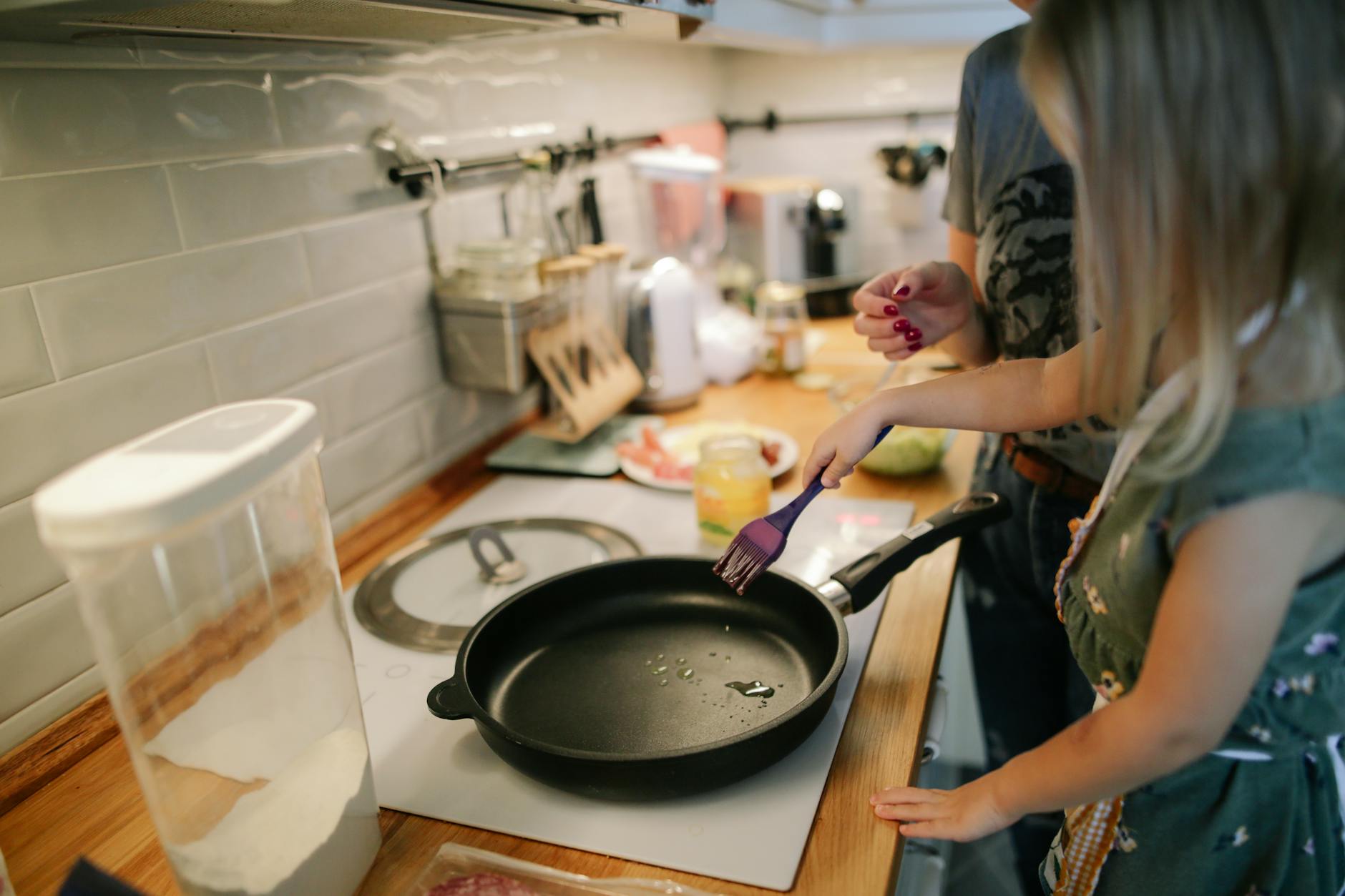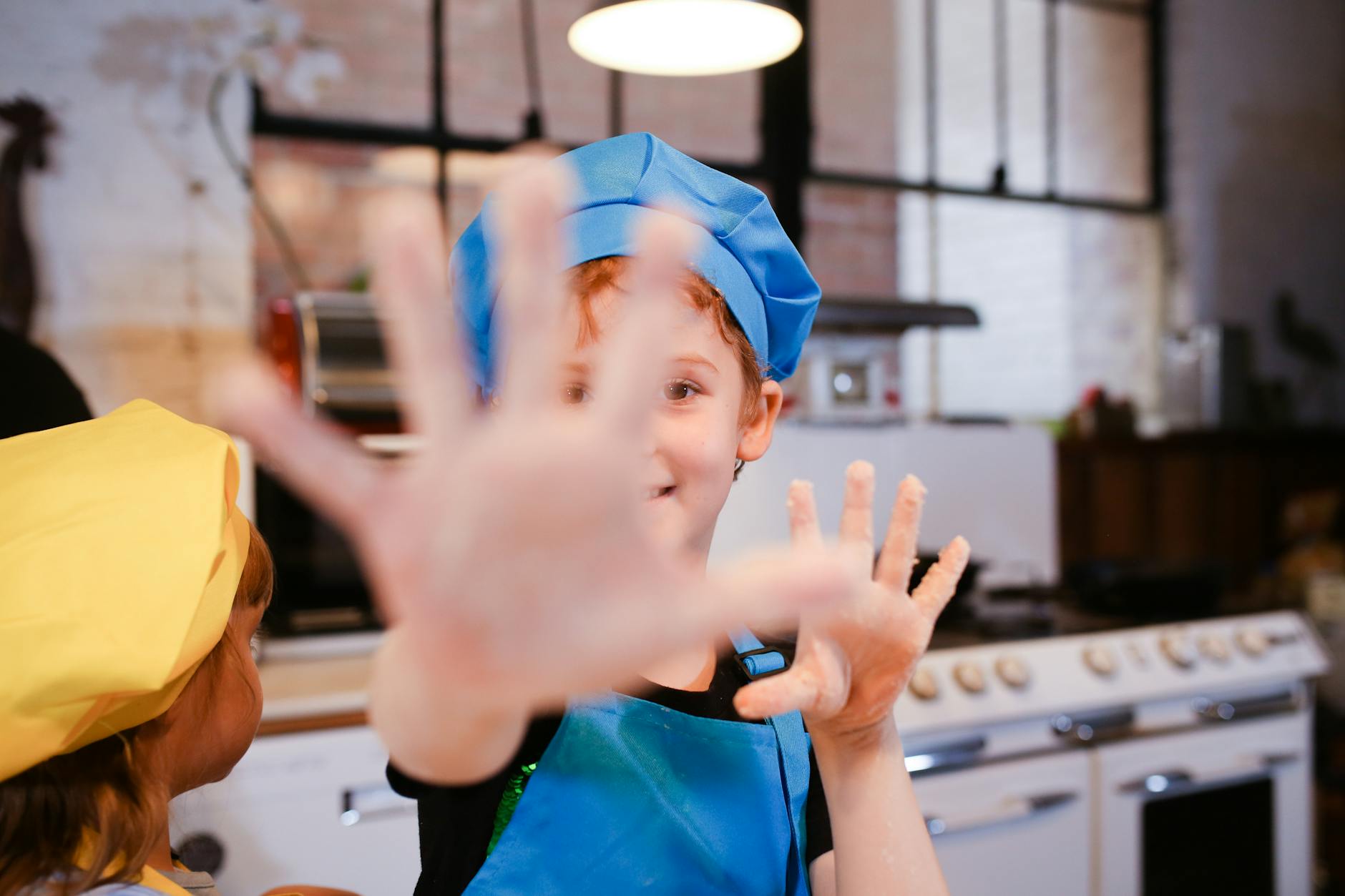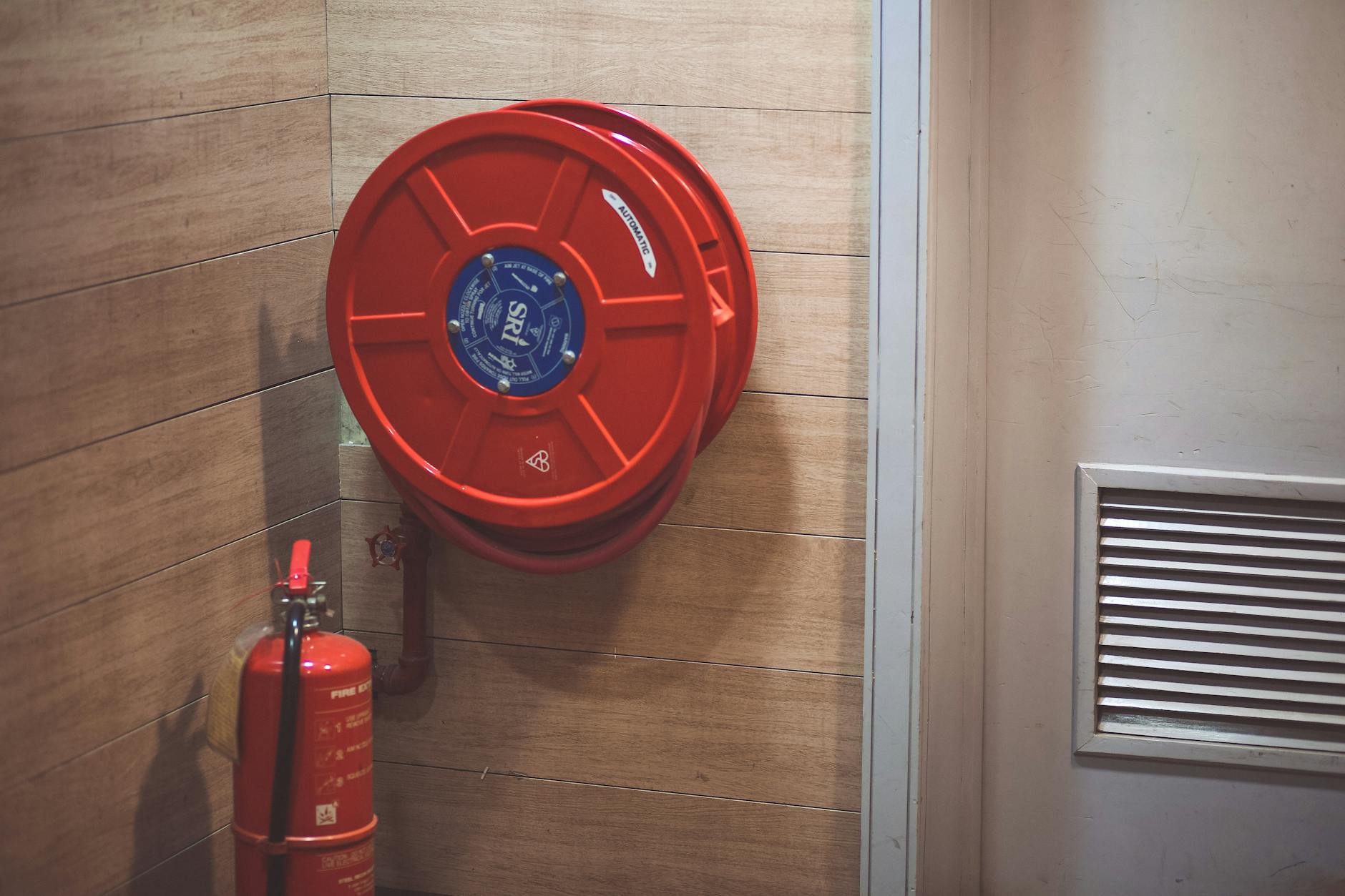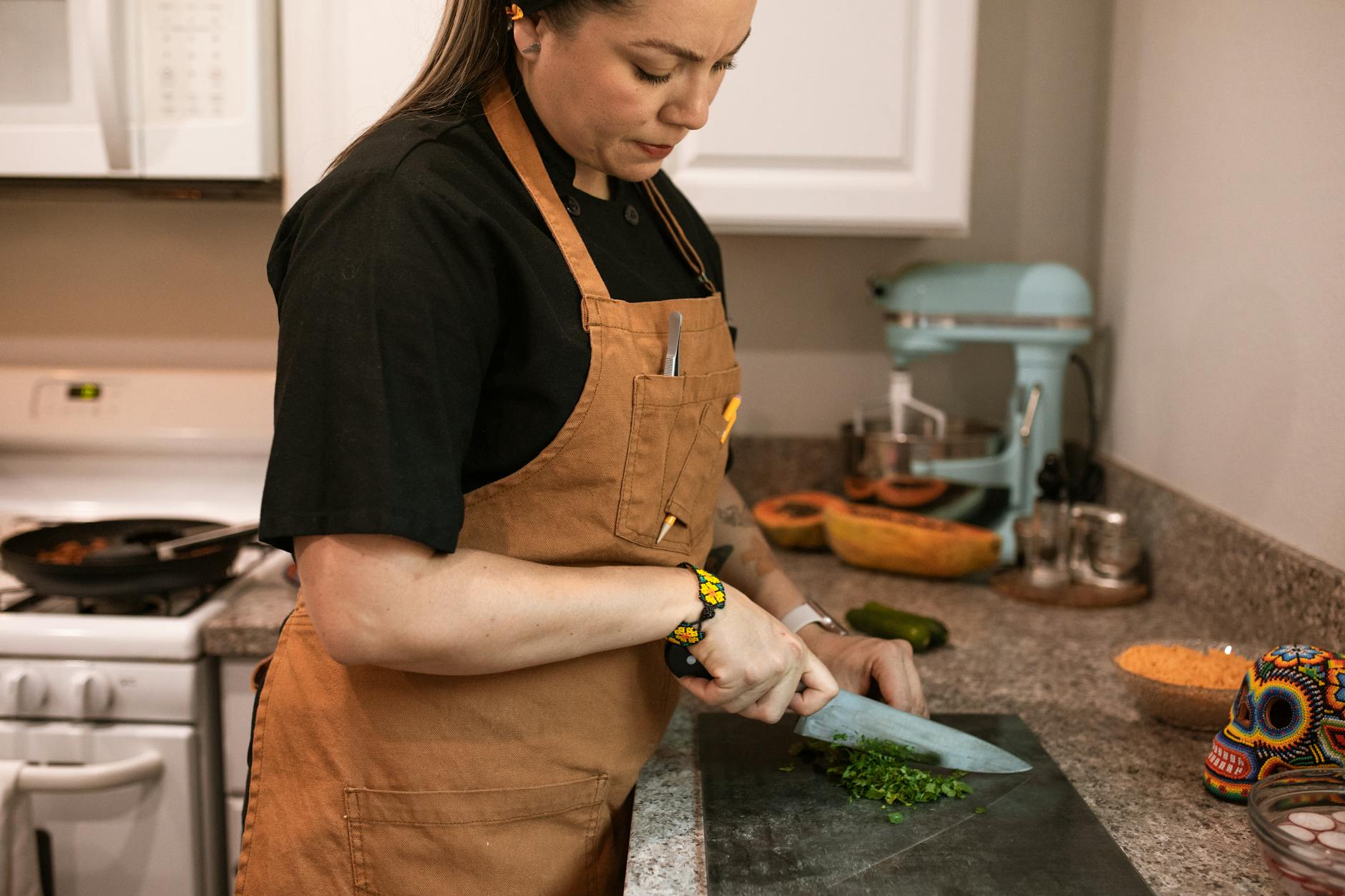
🔪🍳 Picture this: Your little chef is excitedly whipping up their first culinary masterpiece in the kitchen. But suddenly, a pot boils over, a knife slips, or a small fire erupts. Scary, right? The kitchen can be a wonderful place for children to learn and create, but it's also full of potential hazards that can turn a fun cooking session into a dangerous situation in the blink of an eye.
As parents and caregivers, we want to encourage our kids' culinary curiosity, but safety must always come first. From sharp knives and hot stoves to foodborne illnesses, the risks are real. But don't let fear keep your budding chefs out of the kitchen! With the right knowledge and precautions, you can create a safe and enjoyable cooking environment for your children.
In this blog post, we'll explore the crucial aspects of kitchen safety for kids, covering everything from understanding common hazards to teaching proper knife skills and emergency responses. By the end, you'll have a comprehensive toolkit to ensure your little ones can slice, dice, and sauté with confidence – and most importantly, with safety. Let's dive in and discover how to make your kitchen a secure culinary classroom for your aspiring young chefs! 👨🍳👩🍳

Understanding Kitchen Hazards
When introducing children to the joys of cooking, it's crucial to start with a solid understanding of kitchen hazards. This knowledge forms the foundation for safe and enjoyable culinary experiences.
Common Kitchen Accidents
Kitchen accidents can happen to anyone, but children are especially vulnerable. Here's a list of the most frequent mishaps:
-
Burns from hot surfaces or liquids
-
Cuts from sharp utensils
-
Slips on wet floors
-
Food poisoning from improper handling
-
Fires from unattended cooking
Identifying Potential Dangers
To create a safe cooking environment, it's essential to recognize potential risks. Consider this table of common kitchen items and their associated hazards:
| Item | Potential Hazard |
|---|---|
| Stove | Burns, fires |
| Knives | Cuts, lacerations |
| Electrical appliances | Shocks, burns |
| Cleaning products | Poisoning, chemical burns |
| Hot liquids | Scalds, burns |
Age-Appropriate Awareness
Teaching kitchen safety should be tailored to a child's age and developmental stage. Young children might learn basic rules like "hot things burn," while older kids can understand more complex concepts such as cross-contamination. Gradually introducing safety concepts ensures that children develop a comprehensive understanding of kitchen hazards as they grow.
Now that we've covered the fundamental kitchen hazards, let's explore the essential safety rules that every young cook should follow to prevent accidents and ensure a positive cooking experience.

Essential Safety Rules for Young Cooks
Adult Supervision Requirements
When it comes to young cooks in the kitchen, adult supervision is non-negotiable. Children should never be left unattended while cooking, as accidents can happen in the blink of an eye. Establish clear rules about when and how kids can use kitchen appliances, always ensuring an adult is present.
Proper Hand Washing Techniques
Teaching children the importance of hand hygiene is crucial for kitchen safety. Here's a simple guide:
-
Wet hands with warm water
-
Apply soap and lather for at least 20 seconds
-
Scrub between fingers, under nails, and up to the wrists
-
Rinse thoroughly
-
Dry with a clean towel or air dry
Safe Clothing and Accessories
Appropriate attire is essential for kitchen safety. Consider the following:
| Do's | Don'ts |
|---|---|
| Wear closed-toe shoes | Wear loose-fitting clothing |
| Use aprons | Wear dangling jewelry |
| Tie back long hair | Leave towels near hot surfaces |
Kitchen Organization for Safety
A well-organized kitchen is a safe kitchen. Teach children to:
-
Keep workspaces clean and clutter-free
-
Store sharp objects and dangerous tools out of reach
-
Use non-slip mats near sinks and stoves
-
Label and properly store cleaning products
Now that we've covered the essential safety rules, let's move on to safe food handling practices, which are equally important in preventing foodborne illnesses.

Safe Food Handling Practices
Now that we've covered essential safety rules, let's dive into safe food handling practices for young cooks. Teaching children proper food handling techniques is crucial for preventing foodborne illnesses and ensuring a safe cooking environment.
Avoiding cross-contamination
Cross-contamination is a significant risk in the kitchen, especially when working with raw meats. Teach kids to:
-
Use separate cutting boards for raw meats and vegetables
-
Wash hands thoroughly after handling raw ingredients
-
Clean utensils and surfaces between tasks
Proper food storage
Proper food storage is essential for maintaining food safety. Educate children on:
-
Refrigerating perishables promptly
-
Storing raw meats on the bottom shelf to prevent drips
-
Using airtight containers for leftovers
Temperature control basics
Understanding temperature control is crucial for safe cooking. Introduce kids to:
-
Safe cooking temperatures for different foods
-
The importance of using a food thermometer
-
Proper cooling and reheating techniques
| Food Type | Safe Internal Temperature |
|---|---|
| Poultry | 165°F (74°C) |
| Ground Beef | 160°F (71°C) |
| Fish | 145°F (63°C) |
By mastering these safe food handling practices, children can significantly reduce the risk of foodborne illnesses and create a safer cooking environment. Next, we'll explore essential knife skills and safety techniques for young cooks.

Knife Skills and Safety
Now that we've covered essential safety rules, let's focus on an important aspect of kitchen safety: knife skills. Proper knife handling is crucial for young cooks to prevent accidents and build confidence in the kitchen.
Choosing age-appropriate utensils
Selecting the right tools for young chefs is essential for their safety and success. Here's a guide to age-appropriate utensils:
| Age Group | Recommended Utensils |
|---|---|
| 3-5 years | Plastic knives, safety scissors |
| 6-8 years | Butter knives, small paring knives (with supervision) |
| 9-12 years | Serrated knives, chef's knives (with close supervision) |
| 13+ years | Full range of kitchen knives (with guidance) |
Correct cutting techniques
Teaching proper cutting techniques is crucial for safety and efficiency:
-
The "claw" grip: Curl fingers under, using knuckles as a guide
-
The "bridge" method: Create a bridge over food with hand, cut through the opening
-
Slow, controlled movements: Encourage patience and focus
-
Proper posture: Stand with feet shoulder-width apart for stability
Safe knife storage
Proper storage prevents accidents and maintains knife quality:
-
Use a knife block or magnetic strip mounted out of children's reach
-
Store knives in drawers with blade guards
-
Teach kids to never leave knives in sinks or on countertops
Remember, constant supervision and positive reinforcement are key when teaching knife skills to young cooks.

Fire Safety in the Kitchen
Now that we've covered knife skills, let's focus on a crucial aspect of kitchen safety: fire prevention and management. Teaching children about fire safety in the kitchen is essential for their well-being and can instill lifelong responsible cooking habits.
Recognizing fire hazards
Children should be aware of common fire hazards in the kitchen:
-
Unattended cooking
-
Loose clothing near stovetops
-
Flammable materials near heat sources
-
Overheated oils
Using appliances safely
Safe appliance use is key to preventing kitchen fires:
| Appliance | Safety Tip |
|---|---|
| Stove | Keep flammable items away from burners |
| Microwave | Never use metal or foil |
| Toaster | Unplug when not in use |
| Blender | Ensure lid is secure before operating |
Basic fire extinguishing methods
Teach children these simple fire safety techniques:
-
Turn off the heat source if possible
-
Use a fire extinguisher for small fires
-
Smother grease fires with baking soda or a pot lid
-
Never use water on electrical or grease fires
By educating children about fire hazards, safe appliance use, and basic fire extinguishing methods, we can significantly reduce the risk of kitchen fires. Next, we'll explore how to safely handle hot surfaces and foods in the kitchen.

Handling Hot Surfaces and Foods
Now that we've covered fire safety, let's focus on another crucial aspect of kitchen safety: handling hot surfaces and foods. This is especially important when cooking with children.
Using oven mitts and pot holders
Always use oven mitts or pot holders when handling hot cookware. Teach children to:
-
Never touch hot pots or pans with bare hands
-
Use thick, heat-resistant mitts that cover the forearm
-
Check mitts for wear and tear regularly
Safe stovetop practices
The stovetop can be particularly dangerous. Follow these guidelines:
-
Turn pot handles inward to prevent accidental spills
-
Use back burners when possible to keep hot items out of reach
-
Teach children to stay away from the stove when it's in use
Avoiding steam burns
Steam can cause severe burns. To prevent steam-related injuries:
-
Open lids away from your face and body
-
Let hot food cool before handling
-
Use caution when draining boiling liquids
| Safety Measure | Benefit |
|---|---|
| Use oven mitts | Prevents direct contact with hot surfaces |
| Turn handles inward | Reduces risk of accidental spills |
| Open lids carefully | Avoids steam burns |
By following these practices, children can safely navigate hot surfaces and foods in the kitchen. Next, we'll explore how to create a kid-friendly cooking environment that promotes safety and learning.

Creating a Kid-Friendly Cooking Environment
When it comes to cooking with children, setting up a safe and comfortable environment is crucial. Let's explore how to create a kid-friendly cooking space that promotes both safety and enjoyment.
A. Setting up workstations
Creating dedicated workstations for young chefs helps maintain order and safety in the kitchen. Consider the following setup:
| Workstation | Purpose | Essential Items |
|---|---|---|
| Prep Area | Washing and preparing ingredients | Sink, cutting board, colander |
| Mixing Station | Combining ingredients | Mixing bowls, measuring cups, spoons |
| Cooking Zone | Actual cooking tasks | Stove, oven (with adult supervision) |
| Plating Area | Presenting the finished dish | Clean plates, utensils for serving |
B. Ergonomic considerations for young chefs
Ensuring proper ergonomics is essential for comfort and safety:
-
Use step stools to help children reach countertops safely
-
Provide child-sized aprons and oven mitts
-
Choose lightweight, easy-to-grip utensils designed for small hands
C. Organizing tools and ingredients
An organized kitchen promotes safety and efficiency:
-
Store frequently used items at child-friendly heights
-
Label containers clearly for easy identification
-
Use magnetic knife strips or locked drawers for sharp utensils
-
Keep a first-aid kit easily accessible
By creating a well-organized, ergonomic, and safe cooking environment, children can develop their culinary skills while minimizing potential hazards. This setup not only ensures safety but also makes cooking more enjoyable and educational for young chefs.
Teaching Emergency Response
When it comes to cooking with kids, being prepared for emergencies is crucial. Let's explore the essential aspects of emergency response in the kitchen.
Basic First Aid for Kitchen Injuries
Knowing how to handle common kitchen injuries is vital for young cooks. Here's a quick guide:
| Injury Type | First Aid Response |
|---|---|
| Minor Burns | Run cool water over the burn for 10-15 minutes |
| Cuts | Apply pressure with a clean cloth to stop bleeding |
| Choking | Perform the Heimlich maneuver or back blows for children |
When to Call for Adult Help
Kids should know when a situation requires adult intervention. Teach them to call for help when:
-
There's a fire they can't control
-
Someone is severely injured or unconscious
-
They're unsure how to handle a situation
Emergency Contact Information
Create a visible list of emergency contacts in the kitchen. Include:
-
Parents' phone numbers
-
Trusted neighbor's contact
-
Local emergency services number (e.g., 911)
-
Poison control hotline
Encourage kids to memorize these numbers and practice what to say during an emergency call. By teaching children these emergency response skills, we empower them to handle unexpected situations confidently. This knowledge complements the overall kitchen safety practices we've discussed throughout this guide.

Kitchen safety is paramount when it comes to cooking with kids. By understanding common hazards, establishing essential safety rules, and practicing proper food handling, young cooks can develop crucial skills while staying safe. Teaching children about knife safety, fire prevention, and the careful handling of hot surfaces and foods helps create a secure cooking environment. Moreover, fostering a kid-friendly kitchen and educating young chefs on emergency response ensures a positive and safe culinary experience.
Encouraging children to participate in cooking activities not only promotes independence and creativity but also instills valuable life skills. By prioritizing safety and following the tips outlined in this guide, parents and caregivers can create a nurturing environment where kids can explore their culinary interests with confidence. Remember, a safe kitchen is the foundation for fostering a lifelong love of cooking and healthy eating habits in children.
